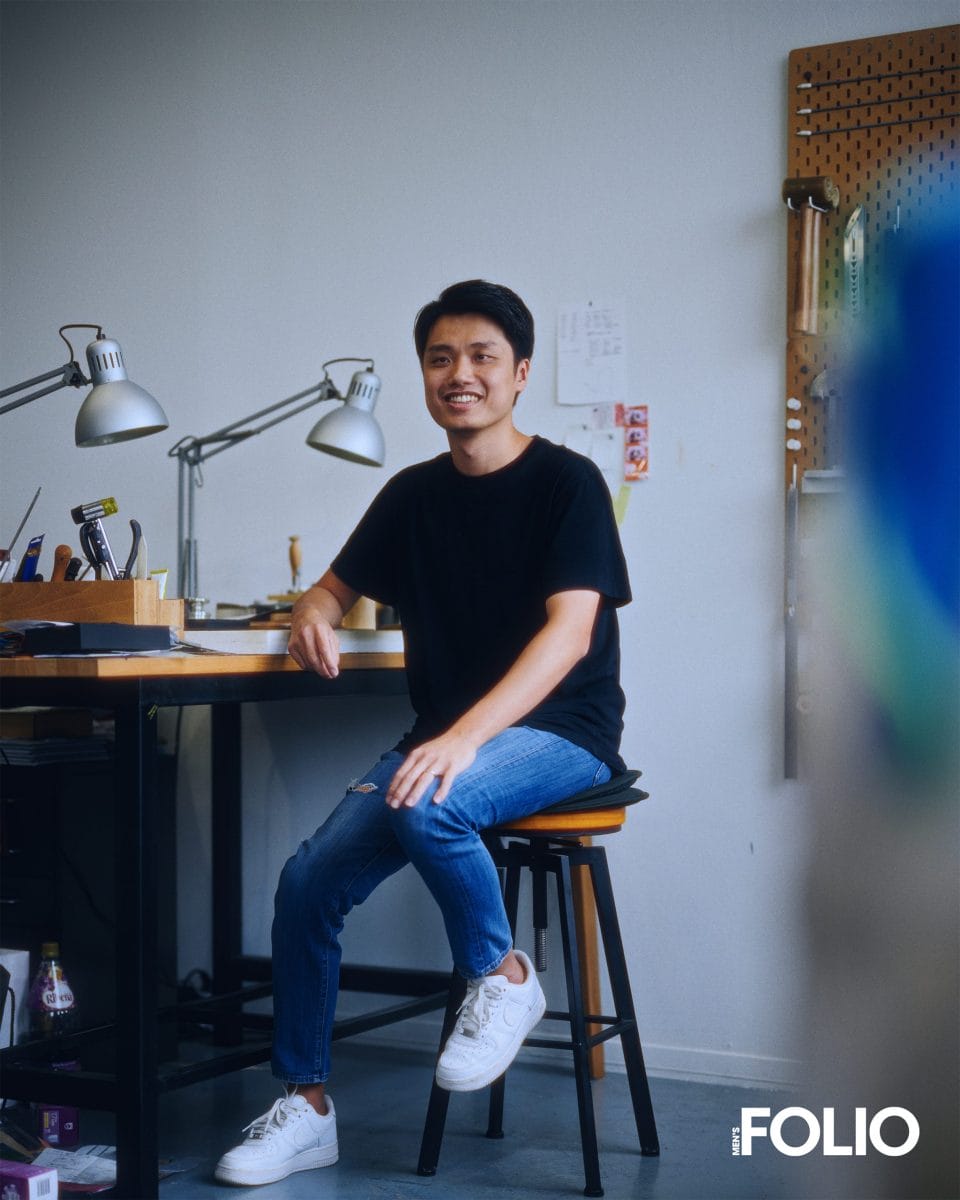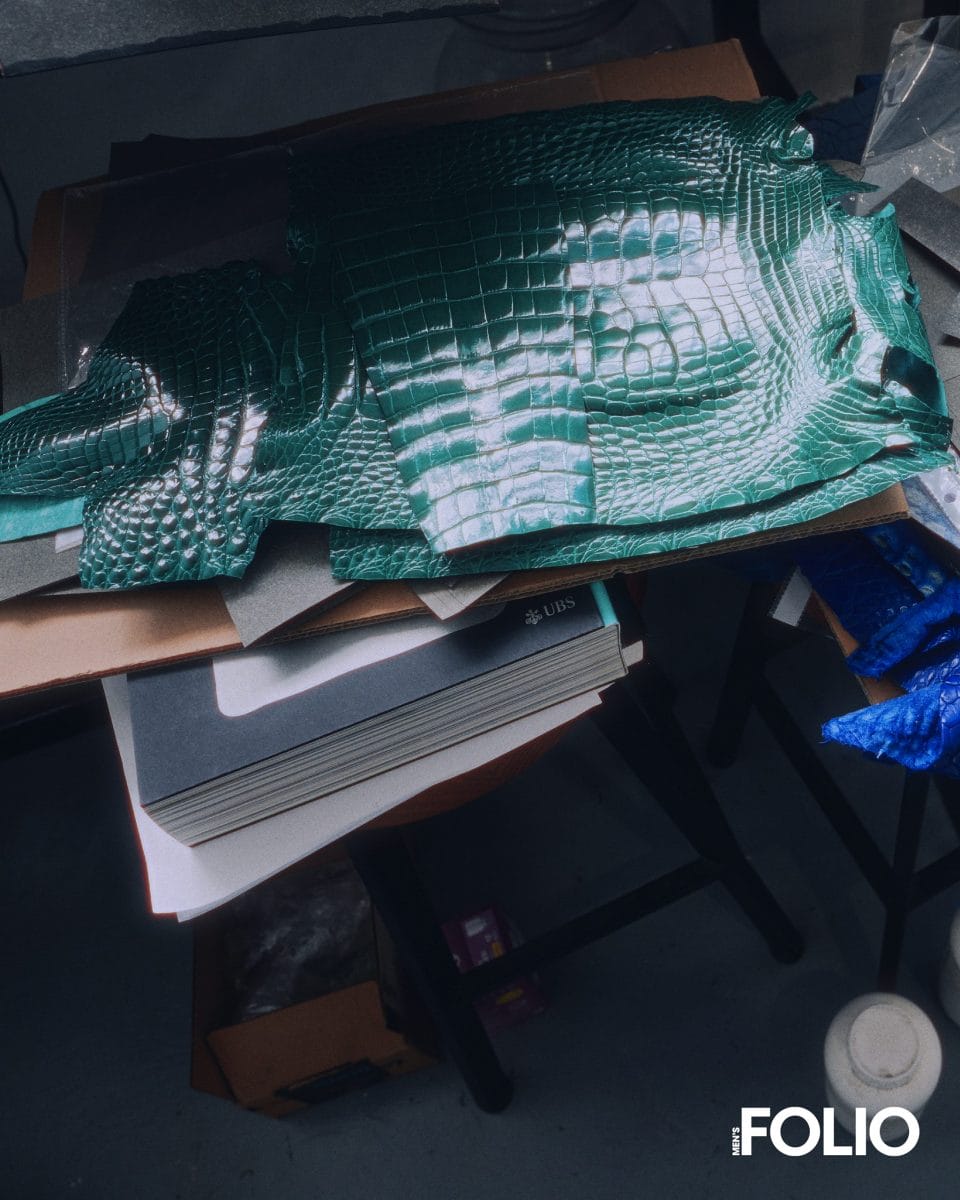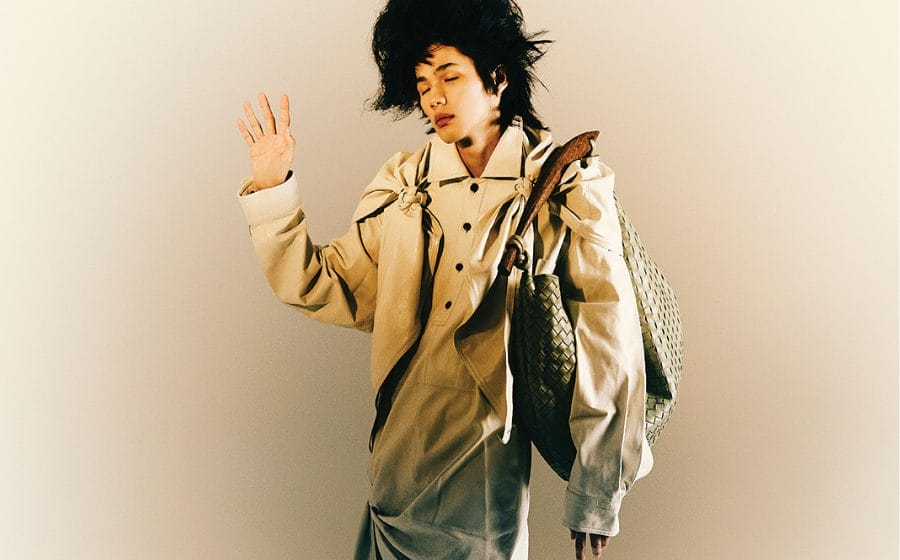 Hughes Low, founder of Hughes Handcrafted sheds light on the strap crafting industry and some of his personal preferences.
Hughes Low, founder of Hughes Handcrafted sheds light on the strap crafting industry and some of his personal preferences.
Watches and watchmakers are often in the limelight but that does not mean we should overlook watch straps and strapmakers. Men’s Folio speaks to three Singapore-based strapmakers, as part of a three-part feature story, who share their passion, challenges and joys of running their business.
Let’s start on a lighter note. Do you have a pet peeve when it comes to watch straps?
It has to fit well. I don’t recommend anything off the shelf because how a strap fits — its softness or stiffness — and how a buckle rests on the wrist are very personal. These are paramount to what I look for in a strap.
In your years of expertise and experience, which is the most underrated and overrated leather?
Ostrich is underrated because it has a lot of character and develops a fantastic patina. I always look to it because I prefer a lot of patina. Unfortunately, many people are afraid of its bumps and dots and get a little bit iffy when looking at them.
Shell cordovan is overrated because it’s expensive and hard to care for. The price for a small piece is equivalent to an alligator or crocodile. Horween is the OG tannery for shell cordovan. They did 100% vegetable tanning but have since transitioned to combination tanning. Many tanneries in Italy or Japan are doing that (combination tanning), passing them off as full vegetable tanned and charging an arm and a foot for it.
If you were to come up with Hughes Handcrafted Leather Care 101, what would rank #1 on that list?
Don’t wear the strap every day. Let the strap air dry if wet instead of using a hair dryer or dabbing it off. If you can, don’t use the 10-pin buckle; use a deployment clasp.
 How did you get involved in leather crafting? Was it a chance encounter, or was it a fascination with the craft you had all this while?
How did you get involved in leather crafting? Was it a chance encounter, or was it a fascination with the craft you had all this while?
Growing up, I liked working with my hands. I told my wife, family and friends that I’d be a woodworker, a metalsmith or a chef if I’m not leather crafting.
I don’t see myself behind a desk from 9a.m. to 5p.m. because that’s just not me. I explored different hobbies and crafts in university, and leather crafting was one of them. It was tough to pick up back then because there were no YouTube tutorial videos, and the books available were quite bad. Thankfully, I met some mentors along the way and went into the craft full-time after reaching a certain level of proficiency.
After running the business for 13 years, how much has it grown in terms of brand equity, the scale of operation and staffing?
I had zero marketing and hardly any write-ups. Features, if any, were usually in newspapers or magazines. A lot of it is down to word of mouth. Happy clients receiving their completed pieces end up referring my work to more people. Many of the watch brands I’m working for were my clients previously, and decided to bring my work to their respective brands. I think that’s one of the most important aspects of what I’m doing.
It was just me alone when I started. Competition back then was very little, and I’m very easily contented. I’d work for maybe a week or two, travel for a week (I had cheap air tickets because my wife was a stewardess), come back and repeat the cycle. It was a very good lifestyle. Four staff have since joined me because every step is done by hand, and working alone is tiring.
The name Hughes Handcrafted says everything it needs to about the business being handmade. What are some principles that you have?
One important principle is to do everything nicely, and more importantly, even for parts you don’t see. I make shoes as a hobby. You will notice that some shoemakers neglect what’s inside (a shoe). You can use subpar materials because the layman will never open up a pair of shoes or a watch strap to see what’s inside. I want to give people the whole package and know that whatever is inside the strap is as good as the outside.
Is it surreal to see your name on the business even 13 years later?
Yeah. I always knew I’d be doing something very personal and on a smaller scale. Happy clients are reflective of what I do because I want them to be happy when they collect something; it brings a smile to me.
 Is the handcrafted tag being used too loosely?
Is the handcrafted tag being used too loosely?
It is. Everyone throws out words like bespoke or handcrafted to elevate a different experience. Personal connections with the client are more important to me. I reply very slowly to new clients. Most clients are referrals, so they know things take a long time to craft, and they value that relationship with the crafter.
You walk into a studio, speak to the crafters, and see people making stuff instead of pushing materials through a machine and branding it as handcrafted. There’s a lot of expertise to operate speciality machines, but it’s a whole different ball game when you’re doing things entirely by hand.
You mentioned time — which alongside material and skill — is one of the biggest factors involved in strap-making. Can you break down the timeline of crafting a strap from start to finish?
The actual work on a strap is not that long, about one to one and a half hours. It’s the waiting time between; the most drawn-out process is edge finishing. Getting an edge that’s smooth and flat takes a very long time. There are faster ways — such as using different chemicals — but they peel off just as quickly. I prefer to have very thin and more layers, which adds to the waiting time. So, a strap takes around three days from start to finish.
Is price the surest reflection and indication of quality?
No, that’s not true because there are a lot of up-and-coming makers in Singapore who charge very low prices. Their works look well made and polished, but they don’t have the confidence to charge a premium. On the other hand, some items are very expensive but very poorly made.
Can there, then, be a compromise between price and quality?
There’s always an audience for the price that you charge. You have to deliver to that level of quality if you’re charging a lot higher. It’s important to be fair and for the client to know it’s worth their money when they receive the product.
 What are the joys of your business that keep you going?
What are the joys of your business that keep you going?
It’s tough to continue if you don’t like the craft. There are days when I dread doing certain processes. I’m not outsourcing to other countries because I still have the passion in me. It’s pretty easy to ship in half-done items, stitch and edge finish them, and pass them off as my brand. A part of me is still picky about what I deliver to clients.
Where is vegan leather heading in the industry? Does it have enough runway to properly sustain itself as a viable option and, in time, completely overtake and replace animal leather?
The runway is definitely there; they just have to find a plastic-free product. I’d be happy to use mycelium leather or something with a higher percentage of organic material. This example (reaches out for a piece) is apple leather, which comprises 95% plastic, 5% Apple waste, and a PVC lining.
Hermès created its mycelium leather, which I’m very excited to try. It feels like leather and is more viable and ecological than this (points to apple leather). I think this (apple leather) is rubbish. If we move to anything like this, I hope the vegan leather industry dies out. It’s a definite no for me if plastics are an alternative.
Do you feel any aversion towards animal leather that will harm the business in the decades to come?
I think not because we’re not harvesting animal skin for leather itself. Skin and leather are byproducts of the meat industry; the meat, off parts and offcuts are fully utilised. If you’re not using the skin at all, then it’s quite a waste. It’s not as practical in Singapore, but a leather glove or jacket will keep you much warmer if you live in a colder country. There will always be a market for leather for such practical uses.
 Looking back on your journey in Hughes Handcrafted, what is your best decision?
Looking back on your journey in Hughes Handcrafted, what is your best decision?
Keeping the business small. I had a lot of people wanting to invest and building it into a bigger company. I spoke with many oldtimers when I first started, and some of them had up to 100 employees in a factory making shoes and bags. In the end, they’re chasing greed and they’re stressed out, ensuring everybody’s paid and happy. It becomes a management of people instead of doing what they love. I’m doing okay. Why not keep it this way?
And the worst?
Not working hard enough in the first few years. I wish I had saved more money when I was younger, so I don’t have to put in so much now. [Laughs] I had so much more energy that I could work up to 20 hours when I was younger, but now I can’t pull an all-nighter.
Just as a wristwatch cannot function without a strap, it is difficult to sustain a business in strap making without a passion and love for watches and the craft itself. Which of the two holds a special place in your heart? You’ve answered it previously; it’s the craft for sure?
Yeah, it’s craft because it’s closer to me and more personal. I love watches, but the entry for watches is a little bit high. There are cheaper watches, but because I’m so involved in this craft, I think that’s what’s attractive to me. Both work together. You need a strap for a watch, and I’m happy to be part of that ecosystem.
The people I meet — such as watchmakers and collectors or the watch manufactures that I visit — are more important than the craft or the watch because it’s about the connections you have with people around you.
Photography Jaya Khidir
Once you are done with this story, click here to catch up with our February 2024 issue.







